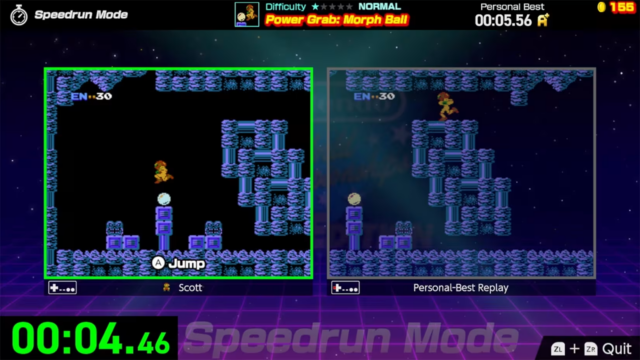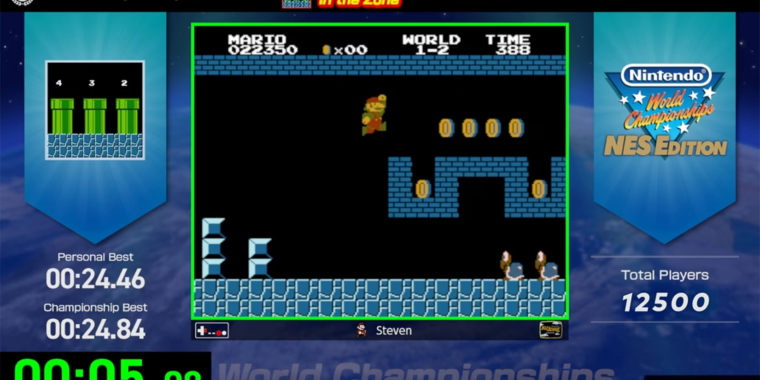If you’ve ever seen a record-breaking video game speedrun or watched a Games Done Quick marathon, you may have entertained fantasies that you, too, could put up some decent times on your favorite old games. Sure, it would probably take a bit of practice, but what these speedrunners are doing doesn’t look that difficult, does it? How hard can it be to press a few buttons with good timing for a few minutes?
After spending a few weeks with Nintendo World Championships: NES Edition, I no longer think that way. The game’s bite-size chunks of classic Nintendo games highlight the level of precision needed for even a few minutes of speedrunning perfection, not to mention the tedium of practicing the same in-game motions dozens of times to build up the needed muscle memory. In the process, I gained a newfound respect for the skill displayed by the best speedrunners and found a fresh way to experience some classic NES games that I felt I knew backward and forward.
Gotta go fast
While Nintendo World Championships draws its name from a series of competitions dating back to 1990, it draws its inspiration much more directly from the more recent rise of the online speedrunning community. Thus, the game’s main single-player mode is named “Speedrun,” tasking players with putting up the fastest times in 150 mini-challenges spread across 13 different Nintendo-developed NES titles.

Nintendo
The earliest of these many unlockable challenges seem almost insultingly easy on their face—collecting the first Super Mushroom in Super Mario Bros. or collecting the sword in The Legend of Zelda, for instance. When you first dive in, you may be more than a little bemused to find yourself showered with in-game rewards for spending just a few seconds completing such basic tasks.
But then you look at how much time that challenge took you—which is thrown up in huge numbers on the screen—alongside an even bigger letter grade. The “A” you got for collecting that Mushroom might seem pretty good, at first, but you know you could do better if you didn’t miss the item box with your first few jumps. So you quickly restart the challenge (and breathe deep through a helpful three-second countdown) and trim off half a second on your second attempt, earning an “A+” for your efforts.
If you are a certain type of player, you might say, “Alright, that’s good enough,” rather than repeating this cycle yet again (if so, I’d argue this game is not for you). But if you’re a different type of gamer, the mere knowledge that you could achieve an S rank with some combination of strategy and execution will propel you through entire minutes of repeated attempts, looking to optimize the perfect few seconds of button presses.
The fact that Nintendo doesn’t reveal the specific timing cutoffs for the different letter grades is equal parts frustrating and subtly encouraging, here. There were plenty of challenges where I felt I played as optimally as I could only to be greeted with a mere “A++” rank next to my new best time. The S rank’s mere existence often inspired me to redouble my efforts and look for new ways to trim even more time off my personal best.









